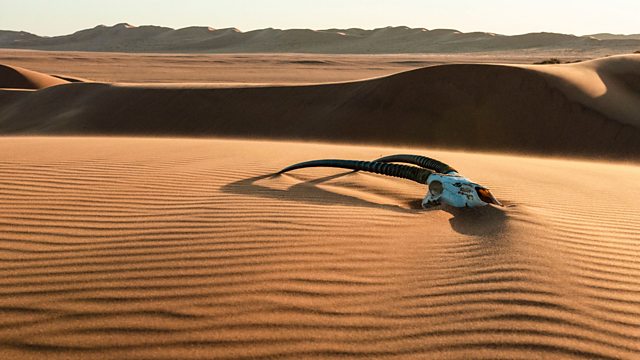Namib: Skeleton Coast and Beyond: The Namib Desert is one of the oldest deserts in the world, having given rise to more indigenous species than any other. With 50 degree temperatures and annual rainfall that is measured in millimetres, how is this possible?
We reveal its hidden water sources – such as the mysterious sea fog that sweeps across its Skeleton Coast. Strange and marvellous desert specialists share this unexpected Eden with giants – lions, elephants and even giraffes. From its Skeleton Coast through the sea of sand to the haze of distant mountains, this ancient land flourishes with life where none seems possible.
Travel to the far corners of the planet and discover the secrets of Earth’s few remaining untouched lands, all brimming with life. Helena Bonham Carter introduces us to some of the planet’s most stunning wildernesses around the world, and their beautiful and fascinating inhabitants.
Namib: Skeleton Coast and Beyond
The Skeleton Coast is the northern part of the Atlantic coast of Namibia and south of Angola from the Kunene River south to the Swakop River, although the name is sometimes used to describe the entire Namib Desert coast. The Bushmen of the Namibian interior called the region “The Land God Made in Anger”, while Portuguese sailors once referred to it as “The Gates of Hell”. On the coast, the upwelling of the cold Benguela current gives rise to dense ocean fogs (called cassimbo by the Angolans) for much of the year.
The winds blow from land to sea, rainfall rarely exceeds 10 millimetres (0.39 in) annually and the climate is highly inhospitable. There is a constant, heavy surf on the beaches. In the days before engine-powered ships and boats, it was possible to get ashore through the surf but impossible to launch from the shore. The only way out was by going through a marsh hundreds of kilometres long and only accessible via a hot and arid desert.
The coast is largely soft sand occasionally interrupted by rocky outcrops. The southern section consists of gravel plains, while north of Terrace Bay the landscape is dominated by high sand dunes. Skeleton Bay is now known as a great location for surfing. The Saltyjackal, a surf camp located in Swakopmund, Namibia, is currently the only group that runs guided surf trips along the Skeleton Coast.




